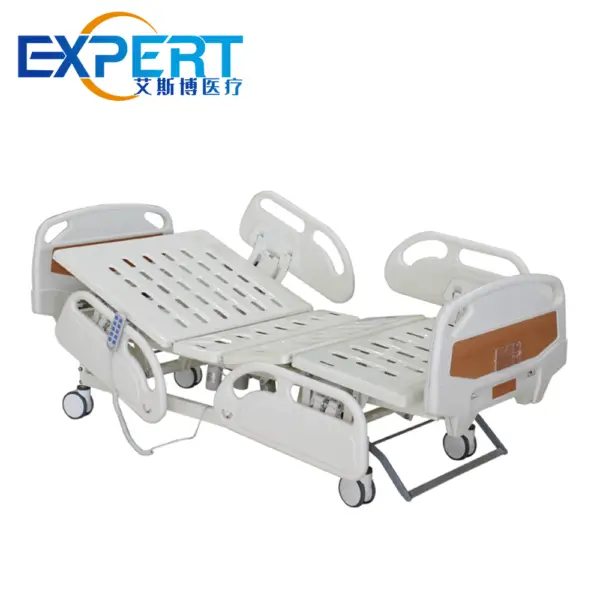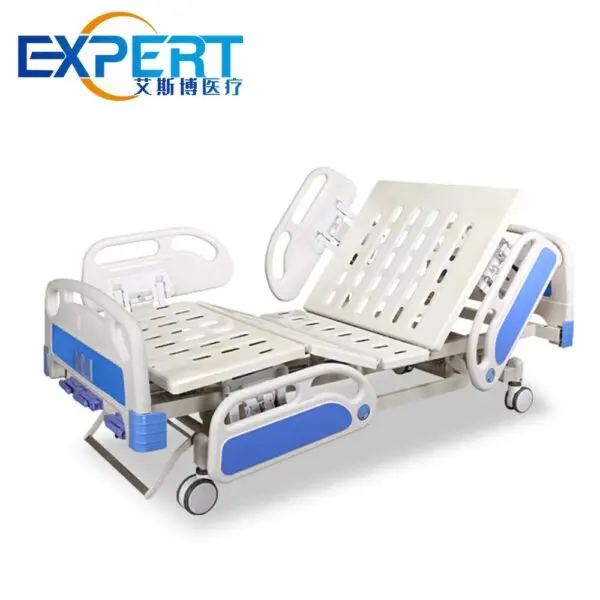Dirección
304 North Cardinal St.
Dorchester Center, MA 02124
Horas laborales
Lunes a viernes: 7:00 a. M. - 7:00 p. M.
Fin de semana: 10 a. M. - 5 p. M.
Antes de profundizar en el contenido, me encantaría que te unas a mí en mis plataformas de redes sociales, donde comparto más información, interactúo con la comunidad y publico actualizaciones. Puedes conectarte conmigo de la siguiente manera:
Facebook:https://www.facebook.com/profile.php?id=100071234835011
LinkedIn:https://www.linkedin.com/company/74943205/admin/dashboard/
YouTube:www.youtube.com/@shandongexpertmedicalequip4695
TikTok:www.tiktok.com/@expertmedical
Ahora, comencemos nuestro viaje juntos. Espero que el contenido que se incluye aquí te resulte interesante, interesante y valioso.

An adjustable bed hospital is more than just a healthcare facility; it’s a forward-thinking institution that prioritizes patient comfort, mobility, and overall well-being. By incorporating adjustable bed hospital into their care, these hospitals can significantly enhance the patient experience and contribute to faster recovery times. In this blog post, we will delve into the numerous benefits of adjustable bed hospitals for patients, from promoting healing to improving the quality of life.
Adjustable hospital beds are innovative pieces of medical equipment designed to provide patients with maximum comfort and support. These beds can be electronically adjusted to various positions, each tailored to address specific medical needs. For instance, elevating the head of the bed can alleviate symptoms of acid reflux, congestion, and breathing difficulties, while elevating the foot of the bed can help reduce swelling in the legs and feet. The Trendelenburg position, which involves tilting the bed downward at the head, can improve blood flow to the brain and heart, while the reverse Trendelenburg position, which tilts the bed upward at the head, can be helpful for relieving acid reflux and promoting drainage.









One of the most significant advantages of adjustable bed hospitals is their ability to provide unparalleled comfort to patients. By allowing patients to effortlessly find and maintain their optimal sleeping position, adjustable hospital beds can significantly reduce pain, improve sleep quality, and alleviate pressure points. This enhanced comfort can lead to a more restful and rejuvenating sleep experience, which is crucial for the body’s healing process.
Adjustable bed hospitals can play a pivotal role in assisting patients in regaining their independence and mobility. By facilitating easier transfers and repositioning, adjustable hospital beds can help prevent pressure ulcers, contractures, and other complications associated with prolonged bed rest. This increased mobility can empower patients to participate more actively in their own care, leading to a faster recovery and a greater sense of autonomy.
By promoting proper alignment of the body and reducing pressure on specific areas, adjustable bed hospitals can significantly accelerate the healing process. For example, elevating the legs can reduce swelling and promote circulation, which can be particularly beneficial for patients with injuries or conditions that affect blood flow. Additionally, by providing optimal support and reducing discomfort, adjustable bed hospital can create a more conducive environment for the body’s natural healing mechanisms to work effectively.
Adjustable bed hospitals can play a crucial role in reducing the risk of various complications that can arise from prolonged bed rest. By distributing weight evenly and allowing for frequent repositioning, adjustable hospital beds can help prevent pressure ulcers, a common and painful condition that affects the skin and underlying tissues. Furthermore, by promoting blood flow and preventing blood clots, adjustable hospital beds can help reduce the risk of deep vein thrombosis (DVT), a serious condition that can lead to pulmonary embolism. Additionally, by elevating the head of the bed, adjustable hospital beds can help prevent aspiration, a condition in which food or liquids enter the lungs.
Beyond the physical benefits, adjustable bed hospitals can also have a significant impact on a patient’s mental health. A comfortable and supportive bed can reduce anxiety and depression, and promote a sense of well-being. By providing a sense of control and independence, adjustable hospital beds can help patients maintain a positive outlook and cope with the challenges of illness or injury.
Adjustable hospital beds come with a variety of features that can further enhance their functionality and provide additional benefits to patients. High-quality mattresses are essential for providing proper support and comfort, while side rails can help prevent falls and provide a sense of security. Overbed tables can be used for eating, reading, or working, while a remote control allows patients to adjust the bed independently, promoting a sense of control and autonomy.

| Tipo de colchón | Beneficios | Drawbacks |
|---|---|---|
| Foam mattress | Provides cushioning and conforms to the body, offering excellent pressure relief and comfort. | May retain heat and moisture, potentially leading to discomfort and skin irritation. |
| Gel-infused foam mattress | Offers cooling properties and pressure relief, providing a more comfortable and supportive sleep surface. | Can be more expensive than traditional foam mattresses. |
| Air mattress | Provides customizable support and can help prevent pressure ulcers by allowing for the adjustment of air pressure in different zones of the mattress. | May be noisy and require more maintenance, such as regular inflation and deflation. |
Adjustable bed hospitals offer a multitude of benefits for patients, from enhancing comfort and promoting healing to reducing the risk of complications and improving mental well-being. By providing customized support, facilitating easier mobility, and creating a more conducive environment for recovery, adjustable hospital beds can significantly improve the overall quality of care. When selecting an adjustable bed hospital, it is essential to consider the specific needs of the patient, the available features, and the quality of the mattresses to ensure optimal comfort, support, and healing.
What is the difference between a hospital bed and a regular bed?
Hospital beds, particularly adjustable hospital beds, are specifically designed to accommodate patients with medical conditions and offer a range of adjustable features, such as head and foot elevation, to promote comfort, support, and healing. Regular beds, on the other hand, lack these specialized features and may not be suitable for patients with limited mobility or specific medical needs.
¿Con qué frecuencia debería? Cama de hospital mattresses be replaced?
The frequency of mattress replacement depends on various factors, including the patient’s weight, the type of mattress, and the level of soiling or damage. However, it is generally recommended to replace hospital bed mattresses every 2-3 years to ensure optimal comfort, support, and hygiene.
Poder adjustable beds ¿Se puede utilizar en casa?
Yes, adjustable beds can be used in home care settings to provide comfort, support, and independence for patients. These beds can be particularly beneficial for patients with chronic illnesses, injuries, or disabilities that limit their mobility or require specific positioning.
